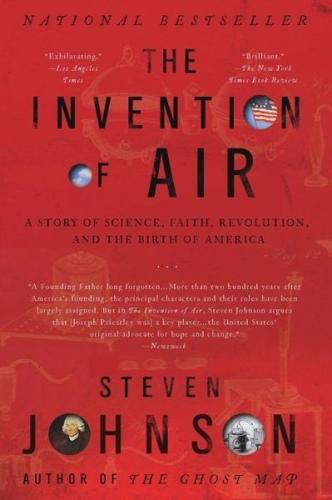
The Invention of Air: A Story of Science, Faith, Revolution, and the Birth of America
by
Steven Johnson
Published 26 Dec 2008
It would have been a stroke of extraordinary good luck. This was Joseph Priestley, formerly of Hackney, England, en route to his new home in America. At sixty-one years old, he was among the most accomplished men of his generation, rivaled only by Franklin in the diversity of his interests and influence. He had won the Copley Medal (the Nobel Prize of its day) for his experiments on various gases in his late thirties, and published close to five hundred books and pamphlets on science, politics, and religion since 1761. An ordained minister, he had helped found the dissenting Christian sect of Unitarianism. He counted among his closest friends the great minds of the Enlightenment and the early Industrial Revolution: Franklin, Richard Price, Josiah Wedgwood, Matthew Boulton, James Watt, Erasmus Darwin.
…
I flatter myself, however, that I have hit upon one of the methods employed by nature for this great purpose. How many others there may be, I cannot tell. By the fall, the Honest Whigs were abuzz with Priestley’s discovery. Negotiations ensued within the Royal Society and by November the Society voted to award him the Copley Medal, the most prestigious scientific prize of its day, “on account of the many curious and useful Experiments contained in his observations on different kinds of Air.” In receiving the prize, Priestley was joining the ranks of his friends Canton and Franklin, who had three medals between them. Only five years after they had encouraged him to turn his experimental hobbies into a serious vocation, Priestley had reached the highest pinnacle of scientific achievement.
…
And, in their behalf, I must earnestly request you to continue those liberal and valuable inquiries, whether by further prosecuting this subject, probably not exhausted, or by investigating the nature of some other of the subtle fluids of the universe. There would be many “subtle fluids” to investigate in the coming years. Priestley would be the first to identify ten of them, including hydrogen chloride, ammonia, sulfur dioxide, and silicon fluoride. But his most celebrated—and contested—discovery would come nearly two years after the Copley Medal. Priestley’s meteoric rise to prominence as a scientist—along with his political writings—had attracted the attention of William Petty, Earl of Shelburne, former secretary of state and arguably the most intellectually nimble and inquisitive political figure in Britain. (Shelburne’s Irish roots and liberal politics also made him one of the least popular.)
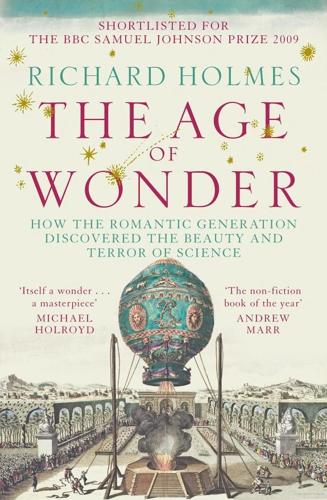
The Age of Wonder
by
Richard Holmes
Published 15 Jan 2008
(Alexandre Charles’s ballooning assistant), 131-2 Roberts, Upton, 375 Robespierre, Maximilien, 247 Robinson, Henry Crabb, 348 Rodin, Auguste: The Thinker (sculpture), 404n Roget, Dr Peter Mark, 264, 302, 402 Romain, Pierre, 153-4 Romanticism: supposed hostility to science, xv-xvii; and science biography, 94n; and scientific discovery, 208, 318; wanderers in Italy, 425 Rome: Davy’s old age in, 432 Rousseau, Jean-Jacques: on Noble Savage, 3-4; on property and ownership, 16n; writes on South Seas, 46n Rowlandson, Thomas, 291 Royal Astronomical Society: founded, xix, 393, 407; awards Gold Medal to Caroline Herschel, 410-11 Royal College of Surgeons, London, 308-9, 317, 336 Royal Geographical Society: merges with Africa Association, 58, 212 Royal Institution: foundation, xix, 199, 285; Humphry Davy at, 241n, 272, 277, 285, 291, 294; finances improve, 291; Coleridge lectures on ‘Poetry and the Imagination’ at, 295, 299-300, 467; deterioration in conditions, 348; Faraday appointed to, 348-9, 358; Davy appointed Vice-President, 359; service to British industry, 362; and Davy’s development of miners’ safety lamp, 370, 372-3; Faraday appointed Director, 405; Faraday’s electromagnetic researches at, 453; Christmas Lectures for Children, 454; atomic clock, 467-8; author lectures on Coleridge at, 467; Proceedings, 467n Royal Navy: commissions Davy to investigate corrosion of ships’copper hulls, 411-12, 414 Royal Society: supports Endeavour voyage, 9-10, 190; honours Banks and Solander, 43; Banks elected President, 54-5; moves to Somerset House, 55; and Herschel’s discovery of Uranus, 98-100; Herschel elected to membership and awarded Copley Medal, 102-3, 105; members sceptical of Herschel’s accomplishments, 108; and early ballooning, 133, 134, 147, 155; elects Jeffries to Fellowship, 152-3; adopts Caroline Herschel’s Star Catalogue, 194; and scientific observation, 249; Beddoes applies to for financial support, 251-2; awards Copley Medal to Davy, 295; Davy delivers Bakerian Lectures, 295-9, 359; medical scientists in, 306-7; Davy reports to on safety-lamp investigation, 363-5; Davy’s prototype safety lamp presented to, 368; awards Rumford Medal to Davy, 369; Banks attempts to maintain pre-eminence and unity, 393-7; composition, 394; Davy succeeds Banks as President, 397-9; Davy’s unpopularity at, 412-13; Davy resigns presidency, 419; Davy sends late papers to, 431-2; Davy endows Medal, 434; role, 435; John Herschel’s presidential candidacy (1829), 436; elects Duke of Sussex President, 437; Babbage attacks, 438-9; fails to promote scientific endeavour, 438-9; Faraday delivers Bakerian Lectures, 453; John Herschel elected President, 465; Philosophical Transactions, 61, 100, 121-2, 152, 173, 198, 274, 286, 307, 413 Royal Zoological Society, 404 Rumford, Benjamin Thompson, Count: visits Herschel, 199; demonstrates heating effect of friction, 250; interviews Davy, 277; and founding of Royal Institution, 285; attends Davy’s Royal Institution lecture, 286; and finances of Royal Institution, 291; in Gillray cartoon, 292; second marriage (to Marie-Anne Lavoisier), 384 Rumford, Countess (formerly Lavoisier) see Lavoisier, Marie-Anne Rylands, Miss (of Bristol), 265 Sacks, Oliver: Uncle Tungsten, 298n Sadler, James, 144-5, 149, 156-8 Sadler, Windham, 158 Sage, Laetitia: makes first female balloon ascent, 141-3 Saint-Fond, Faujas de, 132, 196 Saint-Hilaire, Madame de, 129 Sandemanians, 352 Sandwich, John Montagu, 4th Earl of, 9, 43, 47, 50, 53 Sansanding, West Africa, 224, 226-7, 231 Satterley, John, 40 Saussure, Horace de, 12 Saxe-Gotha, Francis Frederick, Duke of, 168 Sceptic, The (anon. pamphlet), 273 Schelling, Friedrich, 315, 322, 329, 410 Schiller, Friedrich, 315; Wallenstein, 267 science: objectivity, xviii; dissemination of, xix; second revolution, xv-xvi; and error, 93, 94n; and biography, 94n; and observation, 249 & n; Coleridge defends, 267; Davy on philosophy and romance of, 288-90, 371; and religion, 312-13, 317-20, 449-50, 459; Davy writes on limits of contemporary knowledge, 355-6; rivalries and priority disputes in, 373 & n; application in British Empire and colonies, 386; and relations between master and apprentice researchers, 403 & n; debate on apparent decline in Britain, 435, 437-45; and feminism, 436n; Victorian expansion, 446, 468; and search for unifying laws, 458; continuation and global interest, 468-9 Science Museum, South Kensington, 404n scientific instruments, xviii scientist: as term, 253, 450 Scoresby, William, 455 Scotland: Davy honeymoons and holidays in, 346, 361 Scott, George: accompanies Park on second African expedition, 222; death, 224-5 Scott, Sir Walter: treated by Mungo Park, 221-2; Davy meets, 295; supposed authorship of Frankenstein, 325; friendship with Jane Apreece, 338; earnings, 344; entertains Davy and Jane on holiday, 398; on Davy’s decline, 414; depicted in Davy’s Salmonia, 417; reviews Davy’s Salmonia, 423; unsuccessfully urges Jane to publish account of Davy, 434 Scrope, Paul, 455 scurvy, 1 Sedgwick, Adam, 446-7, 449-50, 460 Sego, West Africa, 217, 224 Seven Years War (1756-63), 68 Seward, Anna, 50 Shakespeare, William, 429, 431, 443-4 Sheffield, William, 47-8 Sheldon, John, 146, 155 Shelley, Clara (Mary’s daughter), 327 Shelley, Harriet, 158 Shelley, Mary: on solitary scientific genius, xvii; told of James Lind, 121n; on Hypatia of Alexandria, 248; departs for Italy, 311; hears Davy lecture, 325-6; in Switzerland, 326-7; conceives science-fiction story, 327; pregnancy and birth of baby, 327, 331; and Vitalism, 327; and German origins of Frankenstein experiment, 329-30; and development of Dr Frankenstein’s Creature, 331-3; Frankenstein, 325-8, 456-7; stage and film adaptations, 334-5 Shelley, Percy Bysshe: taught by James Lind, 121n; and ballooning, 157-8, 162; on clouds, 160; and extraterrestrial beings, 167; treated by Lawrence, 311, 331; absent from Haydon’s ‘Immortal Dinner’, 318, 320; anti-Christian views, 320, 450; and authorship of Frankenstein, 325; speculative scientific/psychological essays, 326-7; in Switzerland, 326, 457; incorporates Davy’s ideas into work, 344; in Naples, 378-80; on Lac Leman with Byron, 383; revolutionary and atheistical ideas, 390-2; appends Notes to poems, 391; contracts ophthalmia, 407; drowned, 355, 408; obituary, 408; Alastor, or The Spirit of Solitude, 233, 311; ‘Epipsychidion’, 379-80, 425; ‘Essay on the Devil and Devils’, 391; ‘Essay on a Future State’, 311, 391; ‘The Magnetic Lady to her Patient’, 315n; ‘Mont Blanc’, 327; ‘The Necessity of Atheism’, 390; ‘Ode to the West Wind’, 356; ‘Ozymandias’, 404; Prometheus Unbound, 344, 391-3; Queen Mab, 344, 391 Shepherd, Antony, 168 Sheridan, Elizabeth (née Linley; RBS’s first wife), 76 Sheridan, Richard Brinsley, 76 Shortland, Michael and Richard Yeo (eds): Telling Lives in Science, 303n Silla, West Africa, 218 Simond, Louis, 292 Sir Lawrence (brig), 47 slave trade: Park’s influence on abolitionists, 233; Banks’s views on, 386-7 Slough: Caroline Herschel moves into rooms in, 188, 194-5; see also Grove, The smallpox: inoculation against, 285 Smiles, Samuel, 372 Smith, Adam: on property, 16n; Philosophical Enquiries, 172 Smith, Charlotte, 267 Smith, Robert, 61; Compleat System of Opticks, 74, 79, 88; Harmonics, 70, 74, 82 Smith, Sydney, 338, 341, 376 Snow, Stephanie J.: Operations without Pain, 284n Söderqvist, Thomas (ed.): The Poetics of Scientific Biography, 94n sodium: Davy discovers, 297-8 Soho Square, London: Banks’s house in, 54, 58, 381 Sokoto, West Africa, 230 Solander, Daniel: on Endeavour voyage, 1, 4, 9-10, 13-14, 23, 38n, 39; Banks nurses during illness, 40; advises Harriet Blosset to break with Banks, 42; celebrity on return from voyage, 42-3; journal appropriated, 44; helps Banks with publication of journal, 46; activities in London, 49; meets Omai, 50; in Parry portrait with Omai, 51; on Banks’s parting from Sarah Wells, 55; death, 56, 396 solar system: Herschel’s view of, 122 Somerset, Charlotte, Duchess of, 384 Somerset, Edward Adolphus, 11th Duke of, 393 Somerville, Mary, 179, 407, 447, 452, 454, 458; On the Connexion of the Physical Sciences, 394, 458, 459 Somerville, William, 447 Sotheby, William, 452 soul: concept of, 309, 311, 314, 316 South Africa: John Herschel sets up observatory in, 462-5 South America: Humboldt in, 406 Southey, Edith, 263 Southey, Robert: poems inspired by Bryan Edwards, 212; and Pantisocracy, 252, 259; edits Annual Anthology, 259, 269, 275; experiments with nitrous oxide, 263-5; describes Valley of the Rocks, 266; on difference between scientific and artistic temperaments, 274; believes Davy abandoning poetry, 275, 320; Davy corresponds with, 293; Davy climbs Helvellyn with, 295; Anna Beddoes requests to write biography of husband, 302; quotes Wordsworth’s ‘The Tables Turned’, 320; Davy introduces Jane to, 340; Thalaba the Destroyer, 232, 275 Southey, Thomas, 264 Spain: ship reaches Tahiti, 3 spectography, 440n Sporcken, General A.F. von, 70 Spöring, Herman, 10, 14, 40 Sprat, Mrs and Mrs (of Slough), 188, 195 Spufford, Francis: Cultural Babbage (with Jenny Uglow), 438n Staël, Anne Louise Germaine Necker, Baronne de: Corinne, 338 Stansfield, Dorothy, 303n steam power: development, 382 Steffens, Henrick, 315 Steiner, George, 429n, 469n Stephenson, George: accuses Davy of plagiarising safety lamp, 371-5 Stock, John: Memoir on Beddoes, 302 Stowe, Misses (sisters), 182, 188 Strangelove, Dr (fictional figure), 465n Stukeley, William, xviiin, 456 Styria, 377 Success colliery, Newbottles, 361 Sumatra, 214 sun, the: Herschel believes inhabited, 199, 391; Herschel on effects on political revolutions, 204 Sun Fire Office (Guildhall), 376 surgery: without anaesthetic, 283, 305-6 Sussex, Prince Augustus Frederick, Duke of, 436-7 Sydney Cove see Botany Bay Tabourai (Tahitian interpreter), 6 Tahiti (Otaheite): Banks visits, xxi, 1-7, 10, 13-14; thieving, 4-6, 16, 24, 27-8; Cook’s security measures, 15-16; sexual practices, 17-18, 25-6, 37, 42, 44, 46n; venereal disease in, 18; language, 19; trading, 19-20; grief practices, 22-3; surfing, 24-5; ceremonies and customs, 26-7, 32, 37-8; violations in, 27-8; differences and disharmony in, 28-9; food and cooking, 28; Cook and Banks circumnavigate, 29-32; evidence of cannibalism, 30; native structures, 31-2; tattooing, 32-3; Endeavour leaves, 35; Banks’s written accounts of, 36-7, 45; infanticide, 37-8; Parkinson’s published account of, 45; Omai returns to, 52, 54; as legend, 54; traditional ways destroyed, 59n Tambora volcano (Indonesia): erupts (1815), 383 Tarróa, Tahitian king, 212 Tasmania: exploration, 10 Tayeto (Tupia’s son), 40 Taylor, William, 275 telescopes: Herschel constructs, 60-1, 77, 83-5, 94; refractor type, 77-8; reflector type, 78; Herschel constructs forty-foot Newtonian form model, 163, 176-7, 181-2; forty-foot instrument put into operation, 190-1; management and maintenance problems, 191; forty-foot instrument dismantled, 465-6 Telescopium Herschelii (The Telescope; constellation), 409 Tennyson, Alfred, 1st Baron: In Memoriam, 451n; ‘The Kraken’, 384; ‘Timbucto’, 227-9 Terapo (Tahitian woman), 22 Thelwall, John, 307, 316 Thénard, Louis-Jacques, 297 Thompson, Benjamin see Rumford, Count Thompson, John, 40 Thomson, James: The Seasons, 171, 172n, 243; ‘To the Memory of Sir Isaac Newton’, 440n Thornton, Dr Robert, 11, 41-2 Thrale, Susannah, 114 Ticknor, George, 359-60 Tierra del Fuego, 13, 15 Timbuctoo, 212, 215-16, 218, 220, 225, 227 Times, The: on Mungo Park’s return, 220; attacks Davy for accepting Prix Napoléon, 353; obituary of William Herschel, 408; on deaths of leading scientists, 435; reports on meetings of British Association, 447, 453 Tissandier, Gaston: Histoire des Ballons et Aeronauts Célèbres, 156 Tobin, James, 257, 431 Tobin, John, 431 Tonkin, John, 238-9, 241-4, 250, 253, 285 Tooke, John Horne, 307 Town and Country Magazine, 49 Trinity College, Dublin, 304 True Briton (journal), 220 Tuareg tribesmen, 227-8 Tupia (Tahitian priest), 34, 40 Turner, Joseph Mallord William: cloud paintings, 160 Uglow, Jenny: Cultural Babbage (with Francis Spufford), 438n; The Lunar Men, 246n ultraviolet light, 329 Underwood, Thomas, 272 universe (celestial system): Herschel’s views on, 11-12, 122-4, 204, 208-10 Uranus: Herschel discovers, 96-106, 207; name, 97 & n, 102n, 103; international acceptance of, 101; earlier sightings and recordings, 102; as symbol of Romantic science, 106 utilitarianism, 435 Venice, 380 Venus, Transit of (1768), 5, 10, 21-2, 91 Versailles: balloon ascents at, 126, 135 Vestiges of the Natural History of Creation (anon.), 451 Vesuvius: Davy visits, 356, 358, 378, 381 Victoria, Queen: takes chloroform during childbirth, 284 Vineyard Nurseries, Hammersmith, 11 Vitalism (Life Force), xix, 307, 309-18, 321-3, 325, 327, 354, 356, 421, 428, 431 Volta, Alessandro, 173, 295, 314, 355 voltaic batteries, 245, 273-4, 286, 295, 297, 299, 317, 328-9 Voltaire, François Marie Arouet: in Haydon painting, 319; Candide, 68; Letters on the English Nation, xviiin; Micromégas, 426 Voyager (spacecraft), 190 Wagner, Richard: Tristan and Isolde (opera), 242 Wakefield, Priscilla, 179 Wakley, Thomas, 336 Walker, William: Eminent Men of Science Living in 1807-8 (painting), 303 Waller, Edmund, 424 Wallis, Captain Samuel, 3, 17 Walls End colliery, Northumberland, 361-2, 368-9 Walmer Castle, Kent, 200 Walpole, Horace, 135-8, 140, 338 Walton, Izaak, 276; The Compleat Angler, 339 Wansey (musician), 265 Waterton, Charles, 232, 382; Wanderings in South America, 382 Watson, James: The Double Helix, 373n Watson, Sir William, 60-1, 101 Watson, Sir William, junior: friendship with Herschel, 60-2, 92-3, 98, 100-1, 108-9, 135, 164, 166, 178, 180; and Herschel’s marriage to Mary Pitt, 185-6; and philosophical significance of astronomy, 203 Watt, Gregory: friendship with Davy, 150, 263-4, 266, 275, 362; death, 293-4 Watt, James: recommends Beddoes to Banks, 235; son stays with Davy’s mother, 250; Beddoes seeks financial support from, 251; encourages Beddoes to recruit Davy, 252; Davy visits, 256; in Davy’s nitrous oxide experiments, 263; designs portable gas chamber, 269; letter from Banks on Beddoes’s project, 281 weather forecasting, 160n Webb, T.H., 87 Wedgwood, Thomas, 263, 281 Wedgwood family, 256 Wells, Dr Horace, 283 Wells, Sarah, 49, 53-6, 384 Whewell, William: and John Herschel, 387; supports Wollaston for presidency of Royal Society, 397; and John Herschel’s Study of Natural Philosophy, 441; and formation of British Association, 446-7, 449; and Bridgewater Treatises, 452; reviews Mary Somerville, 459; befriends Charles Darwin, 460; On the Plurality of Worlds, 209 White, Gilbert, 12, 48, 136, 146, 249n Whitehaven Collieries, 369 Wilberforce, William, 386 Wilson, Frances: The Ballad of Dorothy Wordsworth, 187n Windham, William, 140 Wiverou (Tahitian chief), 30 Wollaston, William Hyde, 369, 374, 397-9, 401-2, 417, 436, 438-9 Wollstonecraft, Mary: published by Johnson, 106, 271; earnings, 179; Godwin writes Memoir of, 267; Davy supports, 304 women: earnings and professional status, 179-80; Davy advocates scientific knowledge for education of, 304; and third British Association meeting, 447, 452; membership of British Association, 459 wonder: nature of, xx Woodford, Revd James, 136 Wooster, David: Paula Trevelyan, 460n Wordsworth, Dora (William’s daughter), 203n Wordsworth, Dorothy, 186n, 203n, 249n Wordsworth, John (William’s son), 203n Wordsworth, Mary (née Hutchinson), 186n Wordsworth, William: on Newton, xvi-xvii, 320, 469n; published by Johnson, 106, 271; marriage to Mary Hutchinson, 186n; regional roots, 236; Coleridge visits in Lake District, 267; influence on Davy’s poetry, 276; Davy visits in Lake District, 295; at Haydon’s ‘Immortal Dinner’, 318; in Haydon painting, 319; quarrel with Coleridge, 340; honoured with dinner, 348; on Davy’s decline, 414; John Davy acts as doctor to, 433; effect of poetry on John Stuart Mill, 441; Coleridge on poetry of, 449; Lyrical Ballads (with Coleridge), 254, 275, 291; On Church and State, 449; Peter Bell, 162; The Prelude, 232, 320, 431, 469n; ‘The Tables Turned’, 320; ‘Tintern Abbey’, 316 Wright, Joseph (of Derby): paintings, xix; influenced by Priestley, 246 Wright, Thomas, 77; Original Theory or New Hypothesis of the Universe, 91 Wynn, William, 265 Yansong, West Africa, 230 York, Edward, Duke of (George III’s brother), 75, 177 Young, Edward: Night Thoughts, 92 & n Young, Thomas, 436 Zoffany, Johann, 8, 47 ALSO BY RICHARD HOLMES One for Sorrow (poems) Shelley: The Pursuit Shelley on Love (editor) Gautier: My Fantoms (translations) Nerval: The Chimeras (with Peter Jay) Mary Wollstonecraft and William Godwin: A Short Residence in Sweden and Memoirs (editor, Penguin Classics) De Feministe en de Filosoof Dr Johnson & Mr Savage Coleridge: Early Visions Coleridge: Darker Reflections Coleridge: Selected Poems (editor, Penguin Classics) Footsteps: Adventures of a Romantic Biographer Sidetracks: Explorations of a Romantic Biographer Insights: The Romantic Poets and their Circle Classic Biographies (series editor) Copyright HarperPress An imprint of HarperCollinsPublishers 77-85 Fulham Palace Road, Hammersmith, London W6 8JB www.harpercollins.co.uk Published by HarperPress in 2008 Copyright © Richard Holmes 2008 FIRST EDITION The author asserts the moral right to be identified as the author of this work A catalogue record for this book is available from the British Library EPub Edition © SEPTEMBER 2009 ISBN: 978-0-007-34988-3 All rights reserved under International and Pan-American Copyright Conventions.
…
Banks, in high spirits, seized his hand, congratulated him on ‘the great discovery’, and announced that he was to be elected to the Royal Society and awarded the Copley Gold Medal forthwith-within the next fortnight!126 He claimed it as a decisive British victory over French astronomy, and the eminence of Messier, Pierre Laplace and Lalande, who had hitherto dominated European astronomy. In fact Banks’s enthusiasm had rather got the better of him. The Copley Medal and the fellowship election had to go through the Society’s plodding bureaucratic procedures, which took another six months. Maskelyne used the interval to write warmly to Herschel in August: ‘I hope you will do the astronomical world the favour to give a name to your new planet, which is entirely your own, and which we are so much obliged to you for the discovery of.’127 It was subsequently shown that ‘Georgium Sidus’ had actually been observed and recorded at least seventeen times between 1690 and 1781, and was even catalogued by Flamsteed.
…
He never flew again, and his private diary records several exclamations of ‘thank God’ that he survived. It also includes an almost mystical experience of ‘awful stillness and silence’ that may be similar to Dr Charles’s.62 He received no honours (except being made ‘Baron of the Cinque Ports’), no prize, no pension and no Copley Medal from the Royal Society, but he was at least elected a Fellow. Two months after the flight he revisited Dover in sober and thoughtful mood. ‘At noon visited the cliff and spot of our departure on our late aerial voyage into France. The recollection of it was awfully grand and majestick, and my heart filled, I hope, with sincere and grateful acknowledgments to the kind protections of that day.

The Battery: How Portable Power Sparked a Technological Revolution
by
Henry Schlesinger
Published 16 Mar 2010
Isaac Newton, among others, held that view, but it was Franklin who proved it. Acclaim, in both the colonies and Europe followed. Harvard presented Franklin with an honorary degree, and Yale, along with the College of William and Mary, soon followed. The Royal Society, which had once laughed at his theories, presented him with the Copley Medal and membership. “The Tatler [an early colonial magazine intended to “…pull off the disguises of cunning, vanity, and affectation” to lead its readers toward better Christian lives] tells us of a girl who was observed to grow suddenly proud, and none could guess the reason till it came to be known that she had got on a pair of new silk garters,” Franklin wrote.
…
In a thousand-word description in French, the language of the European scientific community, he described in detail the construction for a working battery. The letter was sent to Sir Joseph Banks, the president of the Royal Society, with whom he had carried on a long-standing correspondence. Volta’s instruments were in wide use among the Society’s members and he had, in fact, received the Society’s highest honor, the Copley Medal, a few years earlier. A second letter soon followed that included a 5,000-word account, with diagrams. In this second letter, Volta compared his new device to the structure of the torpedo fish, a comparison he would make less frequently as time went on, and the real value of the battery in scientific research began to emerge.
…
In London, George Forster, found guilty of murdering his wife and child and duly executed, was rolled out onstage and into medical history at the Royal College of Surgeons fresh from the gallows at Newgate Prison. As Aldini began prodding the body with two rods attached to a charged Leyden jar, Forster’s legs, mouth, and rectum clenched and contorted. Aldini’s efforts earned him the Royal Society’s Copley Medal; to his credit, he never actually claimed to reanimate the dead, restricting his comments to more scientific phrases such as “command the vital powers” and “exerted a considerable power over the nervous and muscular systems.” The Times of London also took a conservative view after witnessing his experiment in 1803.
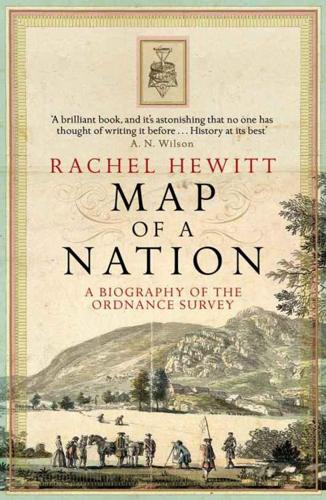
Map of a Nation: A Biography of the Ordnance Survey
by
Rachel Hewitt
Published 6 Jul 2011
He wrote up a detailed report of his experiences on Hounslow Heath: the trauma of the wooden rods, the innovation of glass replacements and the resulting baseline measurement whose accuracy surpassed any previous such operation in Britain. He read his account before the Royal Society between 21 April and 16 June 1785, and was delighted to find himself the recipient of the Copley Medal, the Society’s highest accolade, for his efforts. And the fame that Roy had enjoyed during the baseline measurement continued. Newspapers reported the promotion of this ‘incomparable Engineer’ from lieutenant-colonel to colonel; his attendances at St James’s Palace, where he ‘kissed the King’s hand’; his election as a member of the Royal Society’s council; and the sole exemption of ‘our trusty and well-beloved Lieutenant-Colonel William Roy’ from a pay cut that affected every other military engineer in the kingdom.
…
Mudge, of the Royal Regiment of Artillery, to carry on the Trigonometrical Survey with the assistance of Mr Dalby, and desired that they might receive an Extra Allowance equal to their pay and half-pay whilst actually in the field’. With these words, the Ordnance Survey was born. SHOFTLY BEFORE THE Ordnance Survey’s foundation in 1791, Joseph Banks had presented the Royal Society’s prestigious Copley Medal to Major James Rennell, who had made an accurate map of Bengal, based on a trigonometrical survey. Banks’s presentation speech was bittersweet: ‘I should rejoice could I say that Britons, fond as they are of being considered by surrounding nations as taking the lead in scientific improvements, could boast a general map of their island as well executed as Major Rennell’s delineation of Bengal and Bahar: a tract of country considerably larger in extent than the whole of Great Britain and Ireland.’
…
They had good reason to believe this, because in 1793 two map-makers called Joseph Lindley and William Crosley had published a map of Surrey that was based on trigonometrical information from William Roy’s published accounts of the Paris–Greenwich triangulation. Roy’s godson and sometime assistant was a man called Thomas Vincent Reynolds, to whom he had left his most prized possessions, including his military commissions, his Copley Medal, a watch and a miniature portrait of Roy by Maria Cosway. In that same year, after Britain’s entry into the French Revolutionary Wars, the Board of Ordnance had appointed Reynolds to use Mudge’s Trigonometrical Survey data as the basis for a rapidly executed ‘Military Map of Kent, Sussex, Surrey and part of Hampshire’, a small-scale survey showing the roads on which troops and artillery might be mobilised in the event of an invasion.
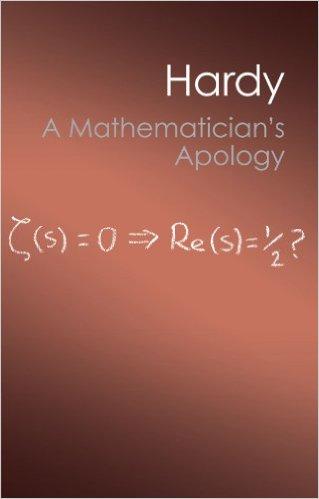
A Mathematician's Apology (Canto)
by
G. H. Hardy
Published 30 Jan 1992
With a humorous skill not unlike his own old form, she collected every scrap of cricket news she could find, though she had never learned anything about the game. Once or twice the sarcastic love of the human comedy came bursting out. Two or three weeks before his death, he heard from the Royal Society that he was to be given their highest honour, the Copley Medal. He gave his Mephistophelian grin, the first time I had seen it in full splendour in all those months. ‘ Now I know that I must be pretty near the end. When people hurry up to give you honorific things there is exactly one conclusion to be drawn. ‘ After I heard that, I think I visited him twice.
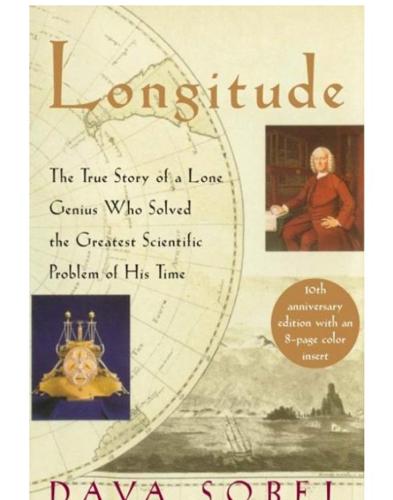
Longitude
by
Dava Sobel
Published 1 Jan 1995
The Royal Society, which had been founded in the previous century as a prestigious scientific discussion group, rallied behind Harrison all through these trying years. His friend George Graham and other admiring members of the society insisted that Harrison leave his workbench long enough to accept the Copley Gold Medal on November 30, 1749. (Later recipients of the Copley Medal include Benjamin Franklin, Henry Cavendish, Joseph Priestley, Captain James Cook, Ernest Rutherford, and Albert Einstein.) Harrison’s Royal Society supporters eventually followed the medal, which was the highest tribute they could confer, with an offer of Fellowship in the Society. This would have put the prestigious initials F.R.S. after his name.
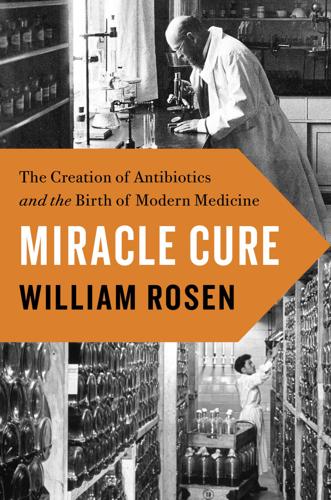
Miracle Cure
by
William Rosen
Published 14 Apr 2017
As a commemorative gift, Hodgkin later presented Chain with a model decorated with pushpins stuck in place to represent the molecule’s structure. Hodgkin’s discoveries were exemplary science, just as she was an exemplary scientist. In addition to the Nobel Prize, she was awarded the Order of Merit, the Copley Medal, the annual medal of the Royal Society, and has appeared not once, but twice, on British stamps.* She derived the structure of some of the most medically significant compounds in the history of medicine, including insulin, vitamin B12, and not merely penicillin, but the entire family of antibiotics.
…
I don’t think it ever crossed our minds about suffering humanity. This was an interesting scientific exercise, and because it was of some use in medicine is very gratifying, but this was not the reason that we started working on it. . . .” For others, though, Florey included, recognition was the thing. Scientists dream of the undying fame that comes with Copley Medals and Nobel Prizes, but even at more modest levels, authoring a major paper is the key to academic status and even employment. This was true even outside of universities; out of a shared conviction, promoted by Major, that Merck needed to be preserved as an attractive place for academics to work, Tishler and Folkers developed a protocol whereby Merck scientists were allowed—even encouraged—to publish results any time after a patent was filed, rather than waiting for the patent to be issued.
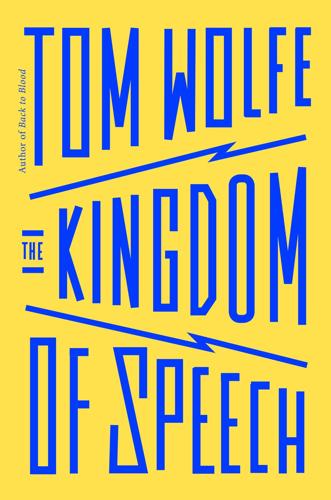
The Kingdom of Speech
by
Tom Wolfe
Published 30 Aug 2016
Ryan, Jeffrey Watumull, Noam Chomsky, and Richard C. Lewontin. c This experience is recounted by Ernest H. Rann, who interviewed Wallace for the article “Dr. Alfred Russel Wallace at Home,” The Pall Mall Magazine (March 1909). d Sir Charles Lyell was knighted in 1848 and made a baronet in 1864. He received the Copley Medal for his scientific work in 1858. He was buried in Westminster Abbey. e Emma Darwin wrote in her diary about hiring servants for her move to Down House. She also documented many details about Charles’s health and their family life. Her complete diaries are available digitally at Darwin Online (Darwin-online.org.uk).
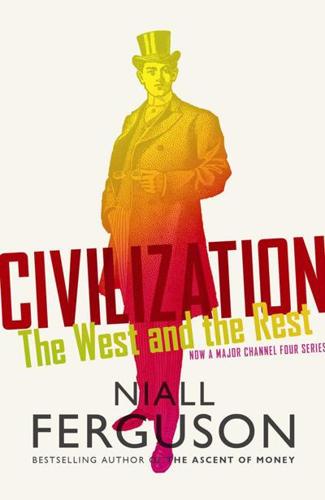
Civilization: The West and the Rest
by
Niall Ferguson
Published 28 Feb 2011
Then, using his own ballistics pendulum, he demonstrated the effect of air resistance, which could be as much as 120 times the weight of the projectile itself, completely distorting the parabolic trajectory proposed by Galileo. Robins was also the first scientist to show how the rotation of a flying musket ball caused it to veer off the intended line of fire. His paper ‘Of the Nature and Advantage of a Rifled Barrel Piece’, which he read before the Royal Society in 1747 – the year he was awarded the Society’s Copley Medal – recommended that bullets should be egg-shaped and gun barrels rifled. The paper’s conclusion showed how well Robins appreciated the strategic as well as the scientific importance of his work: whatever state shall thoroughly comprehend the nature and advantages of rifled barrel pieces, and, having facilitated and completed their construction, shall introduce into their armies their general use with a dexterity in the management of them; they will by this means acquire a superiority, which will almost equal any thing, that has been done at any time by the particular excellence of any one kind of arms.80 For the more accurate and effective artillery became, the less valuable were sophisticated fortifications; the less lethal were even the best-drilled regular infantry regiments.
…
(tailors of Savile Row) 220–21, 220n population figures/density 4, 5, 10, 17, 20–21, 25, 26, 45, 105–6, 200, 200n, 218, 308 depopulation 12, 23, 25, 44 life expectancy 5, 10, 24, 147–8, 205, 208; in Africa 168, 171, 190–91 Muslims 290 young people 244 pornography 273, 274 Portugal 4, 9, 14, 202n China and 35 exploration, voyages of 33–5, 39, 53, 130 India and 34, 35, 39 Portuguese empire 97, 144, 176 Pottier, Eugène: ‘The Internationale’ 208 Priestley, Joseph 201 printing 27, 60 impact/spread of 60–63, 67, 77, 263 Islamic attitude to 68, 86 Pritchard, Jack 136 property rights 13, 97, 99, 111, 125, 152, 288 in British North American colonies 106–7, 106n, 109–12, 115–16, 117, 124–5, 138; headright system 111 John Locke on 111, 112 slaves as property 132, 135–6 in Spanish South American colonies 102, 113–14, 119, 124, 128 Protestantism 106, 107, 114, 259, 264 British North American colonies as Protestant 106, 114 in China 277–80, 282–8; radical sects 285–6 evangelical, in US 273–4 missionaries 263–4; in China 277–80, 282–3 Max Weber on 259, 260–64, 276, 283 see also Christianity Protestant work ethic see work ethic Prussia 144, 159, 214 Berlin 75–6, 86 the Enlightenment 76–9, 81 under Frederick the Great 71, 73–85 Islamic envoys in 86 political system 73, 80 Potsdam 81–8; Sanssouci palace 73–4, 79 religious toleration 76, 78 Silesia, invasion of 74–5 Prussian Academy of Science and Belle-Lettres 79, 80, 81 Prussian army 74–5, 81–2, 91 public health 147, 148, 177, 205 in French West Africa 171–2 see also health issues Puerto Rico 144 Punch 169 Quebec Act (1774) 116 Quesnay, François, on China 46 Quigley, Carroll 3, 297–8 his ‘Rhodes–Milner group’ theory 298n Tragedy and Hope … 298n racial issues in French West Africa 174–5 in German colonies 176, 177–8 interbreeding (miscegenation) 133–6; in French colonies (métissage) 164 in South America 119, 120, 125–6, 133, 135 in US 129, 133, 134–6, 137–9; Civil Rights movement 245; segregation 137–8, 177 racial theory see eugenics railways 170, 171, 204, 215, 218, 224 Reagan, Ronald 252 Reche, Otto 189 Redhouse, James 89 Reformation 9, 38, 60–62, 67, 259 see also Luther, Martin religious issues 3, 8, 17, 266–7 atheism 8, 289 Christianity see Christianity Freud on 270–71, 273 Islam see Islam science/technology and 67–8 Adam Smith on 276 religious toleration 76, 78, 114 religious tracts/publications 61–3 see also individual authors religious wars/conflict 9, 12, 38–9 French revolution as 151, 152, 153, 154 Islamic 71 Resmi Efendî, Ahmed 86–7 revolution 162–3, 164, 227–8, 244, 246, 251–2 by students/young people 245–9 see also individual revolutions Rhodes, Cecil 298n Ricardo, David, his comparative advantage doctrine 202, 202n Ricci, Matteo, SJ, in China 41 Richard II, King of England 23–4 Richard, Timothy 282 Richard of Wallingford 41 Richardson, Lewis Fry 301–2, 301n Rivera, Diego: The Arsenal (painting) 162n Roberts, Richard 200 Robespierre, Maximilien 156 Robins, Benjamin 83–4 New Principles of Gunnery 83 on rifled gun barrels 84 rock and roll/ popular music 230, 243–4, 246, 249–50, 273, 274 Rohrbach, Paul von 181 German Colonial Economics 176 Roman Catholicism see Catholicism Roman Empire 16–17, 296 Gibbon on 257–9, 291–2 Romania 251 Roosevelt, President Franklin Delano xxiv, 230 Rosa, Salvator: L’umana fragilatà (painting) 26 Rosenberg, Alfred 193 Ross, Ronald 169–70 Rothschild, Nathan 161 Roume, Ernest, Governor of French West Africa 170–71 Rousseau, Jean-Jacques 155, 156 Social Contract 78, 151–2 Royal Observatory, Greenwich 70 Royal Society of London 69–70, 80, 83, 84 Copley Medal 84 Ruiz-Linares, Andrés 133 Russia/Soviet Union 7, 83, 156, 303 economic growth 231–2 expansion of 144 exploration of 36 France and 160 Germany and 192, 194, 231–2: in Second World War 233–4 under Gorbachev 250 Japan and 226 legal system 244 Napoleon Bonaparte and 160 nationalism in 182, 227–8 US and 236; Cold War 236–9, 250 as a Western civilization 15 Russian army 234 Russian Revolution (1917–18) 182, 227–8 Russo-Japanese War (1904) 226 Safavid empire 9 St Alban’s Abbey 27, 41 Saint-Domingue (island) 160 Saint-Exupéry, Antoine de: The Little Prince 90 Sandys, George 283 sanitation 23, 147, 179 see also health issues Schacht, Hjalmar 231 Schaudinn, Fritz 175–6 Schiller, Friedrich 77, 79 Schubert, Franz xxiii Schubert, Helmut 194 Schularick, Moritz xvii Schumpeter, Joseph 205 science/technology 7, 10–11, 12, 14, 50–95, 257, 287 advances in/spread of 41–2, 47, 57, 60–71, 216–18, 317–18; chronology of 65–6; as Eurocentric 67 astronomy 64, 65, 66; Islamic 68–9 ballistics 83–5 Chinese 11, 27–8 definition 13 in East Asia 4, 11 gravity, law of 70 Industrial Revolution see Industrial Revolution Islamic see Islamic science/technology in Israel 93–4 military 37, 41, 57, 65n, 233, 235–6 nuclear 94–5 optics 51–2, 64, 70 religious issues in 67–8 royal patronage of 70; by Frederick the Great 71, 79–80, 84 scientific institutions 69–70, 79, 89 scientific method 60, 64–5, 67, 70 collaborative 70 Scotland 263 England and 24, 105, 107, 213 Industrial Revolution 199 see also Britain Scott, Sarah 289 Second World War (1939–45) 192, 233–6 casualty figures 193; civilian 233, 234 causes of 233 Germany in 189–90, 191–5, 231–4; see also Hitler, Adolf Italy in 233–4 Japan in 233–5 Seven Years’ War (1756–63) 115, 116, 116n sexual revolution 246 Shakespeare, William 23, 62n, 324n Shark Island concentration camp, German South-West Africa 179–80 Sharp, Granville 133 Shaw, George Bernard, on Western medicine 148 Shays, Daniel 117 Sherrington, Charles 300 shipbuilding industry 22, 28–9, 37, 48 Sibutus, George 62 siege warfare 52, 54–7 Siegert, Johann Gottlieb Benjamin 121n Sierra Leone 168 silver, from South America 101–2 Singapore 240, 306–7 Singer sewing machines 216–18, 220 Sivasi Efendi 71 slave revolts 131–2, 136, 160 slavery/slave trade 97, 120, 125, 129–36 abolition of 129, 131, 132–3; in British colonies 177; in French colonies 163, 177 in Africa 176, 177 slaves as property 132, 135–6 in Spanish South American colonies 129, 130–32, 133, 135, 136 in US 129, 130, 132–3, 134–6 Smith, Adam 7, 78, 301 on China 19, 20, 46, 78 on religion 276 Theory of Moral Sentiments xxiv–xxv The Wealth of Nations 297 Smith, Abraham (English migrant to South Carolina) 103, 106, 111–12 Sobieski, Jan III, King of Poland 55–6 socialism 208–9 Sorokin, Pitrim 297 Soviet Union see Russia/Soviet Union Spain exploration, voyages of 35–6 France and 119 Spanish Civil War (1936–9) 231, 233 Spanish empire 144 in America see America, South, Spanish colonies in Spengler, Oswald: The Decline of the West 297 spice trade 33, 34, 36 Spinoza, Benedict (Baruch) xxiii, 65 Spurgeon, Charles Haddon 282 Stead, William T. 298n steam engines 70, 200, 204, 218 Stendhal (Henri Marie Beyle): The Red and the Black 162 Stevens, John Lloyd 298–9 Stevenson, Robert Louis xxvi Stott, George 282, 284 Strauss, Levi 241 Suez Canal 219 suffrage, male 210 in French colonies 163 sugar/sugar production 10, 45, 129, 131–2, 160 Suleiman the Magnificent 52–3, 52n, 56–7, 72 Sun Yat-sen 283 Switzerland 41, 159 syphilis 176 Taiping Rebellion, China 211, 279–90, 285 Takiyüddīn al-Rāsid (Taqi al-Din) 68–9 Taleb, Nassim 301 Tamani, Hüseyin Rifki 69 Tang Yi 286 Tanweer, Shehzad 291 tariffs see trade tariffs Tawney, R.
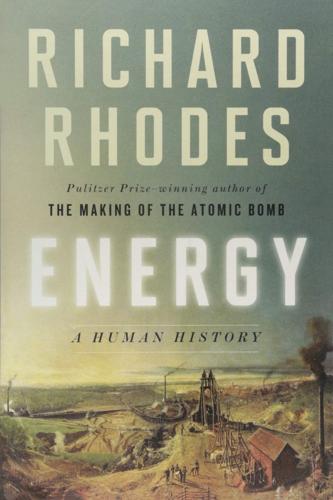
Energy: A Human History
by
Richard Rhodes
Published 28 May 2018
In his famous kite experiment of 1752, Franklin flew a kite in a thunderstorm to collect electrical charge, which he transferred from his wet kite string into a Leyden jar. The experiment demonstrated that the modest sparks and shocks of static electricity were identical with the great bursts of lightning that split the sky in storms. For such “discoveries in electricity,” the Royal Society of London elected Franklin to membership in 1753 and awarded him the Copley Medal, its highest honor. Cutaway view of a Leyden jar, the first battery. Inner and outer foils, separated by nonconducting glass of jar, store static electricity. Ball and chain allow circuit to be closed between foils, discharging them. Announcing the award, the Earl of Macclesfield described electricity as a subject “which, not many years since, was thought to be of little importance . . . nor was anything much worth notice expected to arise from it.”4 Now, as the contemporary chemist Joseph Priestley would affirm, “The greatest discovery which Dr.
…
.), 38 Compleat English Tradesman, The (Defoe), 46 COMSAT satellite, 329 Confederacy, 159–64 Confederate Navy, 160, 161–64 Union ships hunted by, 160–64 Congress, US, 135, 160, 263, 270, 283, 285, 287, 289, 302, 314 House of Representatives in, 271 Congreve, Sir William, 92 Considerations on the Medicinal Use of Factitious [Artificial] Airs, And on the Mannner of Obtaining Them in Large Quantities (Beddoes and Watt), 116 Constitution, 137 Continental Congress, 59 Copenhagen, 177 Copenhagen, University of, 178 Copley Medal, 170, 171 copper, 60, 98, 110, 121, 175, 178, 183–84, 189 Cornwall, 41 cotton, 82, 96, 123, 167 Crawshay, Richard, 75, 76 Cromwell, Oliver, 11, 12 Crosby, Albert, 146, 147 Crosby, Dixi, 146 Cuba, N.Y., 145 Culross, 109, 110 Cumming, Hugh S., 246 Cycloped, 98 Cynon River, 74 Dammam Dome, 253, 254 Dammam No.1, 254, 257 Dammam No.2, 254–55, 257 Dammam No.3, 256 Dammam No.4, 256, 257 Dammam No.5, 256 Dammam No.6, 256 Dammam No.7, 256–57 Daniels, Jopsephus, 261 Darby, Abiah, 48 Darby, Abraham, xiii, 47–48, 64 Darlington, 98 Dartmouth College, 145 Medical School of, 146 Darwin, Charles, 82 Darwin, Erasmus, 82, 107, 108, 115, 116 Davies, Fred, 250, 253, 256 Davy, Humphrey, xiii, 71, 72, 89, 107–8, 116–18, 123, 176, 177, 178, 181–82, 212, 213, 257 Dayton, Ohio, 243, 245 de Castro, Josué, 311 Declaration of Independence, 59 Defoe, Daniel, 45–46 Delaware River, 60 Delhi, 310–11 Democratic Party, 340 Denmark, 178 Depression, Great, 247, 250, 251, 261–62, 293, 305–6 De Quincey, Thomas, 82 Derby, Lord, 92 De re Metallica (Agricola), 9 de Sousa, Luis, 338–39, 340–41 Desrochers, Pierre, 310 Detroit, Mich., 229, 241, 263 Devonshire, Duchess of, 116 Dewley Burn Colliery, 87 Dickens, Charles, 224 Diller, Charles, 110–11 Ding Dong mine, 66, 67 diphtheria, 153 Dollond machine, 172–73, 172 Dönitz, Karl, 265, 266 Donora, Pa., 293–97 Dorothea M.
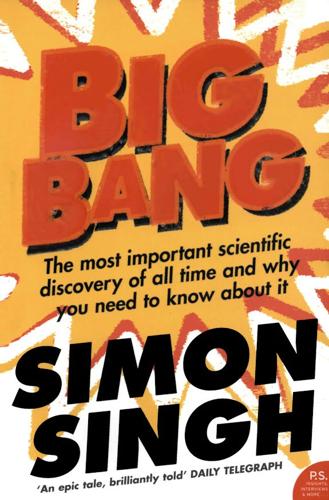
Big Bang
by
Simon Singh
Published 1 Jan 2004
Goodricke was just eighteen years old, and absolutely correct in his analysis of Algol—the pattern was symmetric and an eclipse is a symmetrical process, and the star system was generally bright and with a relatively short dim phase, which again was typical of an eclipsing system. In fact, a large proportion of variable stars can be explained in this way. His work was recognised by the Royal Society, which awarded him the prestigious Copley Medal for the year’s most significant discovery in science. Three years earlier it had been won by William Herschel, and in later years it would be awarded to Dmitri Mendeleev for developing the periodic table, to Einstein for his work on relativity, and to Francis Crick and James Watson for unravelling the secret of DNA.
…
S. 481 Hale, George Ellery 185-9, 188, 218, 374-5 Hale, William 185 Hale Telescope 375 Halley, Edmund 239-40 Harvard College Observatory 157, 204, 207,220,374 Harwit, Martin 418 Hauser, Mike 454 Hawking, Stephen 366, 463 helium 237-8,247; abundance 284-5, 308-9,318-19,326, 327,332,397, 473,476; atom 293, 294,297,322; formation 311,318,320,328, 473, 486; nuclear fusion 300-2,303-5, 304,310; transformed into carbon 389-94, 392,396; transition from plasma to atoms 330, 331 Henry, Paul and Prosper 204 Heracleides of Pontus 22 Heraclitus of Ephesus 79 Herman, Robert 335,397,471,476, 481—3; CMB radiation predicted 332-3,429-31,434-6,456,473; work on recombination 326—36 Herodotus 10 Herschel, Caroline 170—1 Herschel, Sir John 177,201-2, 202 Herschel, William 169-74, 170, 172, 177-81,195,197,402 Hertzsprung, Ejnar 212 Hess, Viktor 158 Hey, Stanley 409-10, 411 Hoffmann, Banesh 98 Hoffmann, Roald, and Djerassi, Carl: Oxygen 470 Hooke, Robert 117-18 Hooker, John 188,402 Hooker Telescope 188-9,220, 222,272,373,374 Houtermans, Fritz 300-3,310 Hoyle, Fred 337-52, 339, 342, 364, 379, 384,425, 441; collaboration with Bondi and Gold 340—5; names Big Bang 352-3,483; The Nature of the Universe 351; popular science 351-2,359; and Ryle 413, 416-17, 419; and Steady State universe 344—9, 349, 361,421,438-40,483; work on nucleosynthesis 386-401, 399,471, Table 5 Hubble, Edwin Powell 216, 220,274, 360,373,471; distance blunder 377—80; galactic distance calculations 214-29,224,254,372-3; Hubble constant 256—8; Hubble’s law 256, 257, 273, 420; redshift observations 248-61, 259,270,277-9,282,336 Huggins, Margaret 238,239,244 Huggins, William 238-9, 238,241, 244-6 Humason, Milton 250-2,255,258-60, 259,273,279 Hutton, James 79 Huxley, Thomas 9 Hyades 135 hydrogen 247, 420, 486; abundance 283-5,308-9,318,323,326, 327,369, 473,476; atom 293-5, 294,297,322; at Big Bang 310, 320; fusion into helium 300-2, 303-5, 304,309,397; intergalactic clouds 424; transition from plasma to atoms 330, 331 Ibn Sina 88 Independent 472, 474—5 inflation 477-9, 482, 488 infrared 230, 233,407 interference 95 interferometry 412 International Astronomical Union 364, 379, 422 Io 90-1, 91 isotopes 293, 294,302,303, 304, 400 Jansky, Karl 403-6, 404,422,433 Janssen, Jules 237 Jastrow, Robert 433, 490 Jodrell Bank 412 John XII, Pope 45 John Paul II, Pope 485 Johnson, Samuel 196 Joliot, Irene 312 Joly, John 78 Jupiter 27, 28,130, 131; moons of 63, 64, 67,90-1, 91, Table 3 Kant, Immanuel 180,181, 184 Kelvin, William Thomson, Lord 78, 93-4 Kepler, Johannes 51-9,61,62, 71,129, 367, 401; Astronomia nova 57—8; on date of creation 76; laws of planetary motion 54—7, 57,119,124; on music of spheres 59; Mysterium cosmographicum 53; Sun-centred universe 53—4, 63 Khriplovich, Iosif 302 kinematic relativity 277 Kirchhoff, Gustav 237,238 Koestler, Arthur 32 Kozyrev, Nikolai 363 Kuhn, Thomas S. 367 Langevin, Paul 312 La Roux, Emile 433 Larsen, Jakob 217 Laslett, Peter 352 Laughton, Charles 375 Leavitt, Henrietta 206-13, 208, 211,223, 225,226,376 le Gentil, Guillaume 136—7 Lemaître, Georges 157,167, 249, 362, 384; forerunner of Big Bang theory 156-61, 254,258,277, 309, 434, 471; and Eddington 268-9, 280; and Einstein 273,274-6, 275; Hypothèse de l’atome primitif 160; nucleosynthesis 309 lenticular altocumulus cloud 344 Leslie, John 487 LeVerrier, Urbain 125 Libri, Giulio 67 Lick Observatory 186,190 life 366, 473, 486-9 light: bending of 130-1, 131, 132,135, 137-40, 141; Doppler shifts 244-6, 245,270; nature of 230; Olber’s paradox 440; primordial sea of 314, 328,360,429, 472-3; at recombination 330-3,331; remnant 332; tired light theory 279-80; transmission of 92-3,97,102; see also sepctroscopy; speed of light light year 176 lightning 87, 88 Lippershey, Hans 61 lithium 398 Lockyer, Sir Norman 237-8 Lodge, Oliver 141 Lorentz, Hendrik 140 Louis XV, King of France 178 Lov, V.E.364 Lovell, Bernard 410-12 Lowell, Percival 247 Lowell Observatory 247,250 Luther, Martin 40 Lyell, Charles 79 McVittie, George 268 Marić, Mileva 106-7 Mars 27,28, 29,30,31, 53-4, 56 Marsden, Ernest 290-2, 291, 296 Massachusetts Institute of Technology 157,315 massive compact halo objects 479 mathematics 7-8,99,150-1,472 Mather, John 454,457 matter, states of 328, 329 Matthias, Berndt 9 Melvill, Thomas 232 Mendeleev, Dmitri 197, 287 Mercury 27,125; orbit 125-8, 127,129, 146; phases 63-5 Messier, Charles 178, 179,183 Mestral, George de 408 meteors 410 Michelson, Albert 94-8, 96,101,102, 103,215,267 Michelson—Morley experiment 94—7, 96, 101,102 microwaves 230,333,403,430,432,448 Milky Way 173-4,177-80,184,228; in Great Debate 189-92,219; pancake-shape 178,180,192; radio emissions 405; size 177,195,223 Millikan, Robert 215-17, 278 Milne, Arthur 277 Minkowski, Hermann 105 Mittag-Leffler, Gösta 213 Moon 6,8,20,62, 62,204,Table 3; half phase 16, 17; lunar eclipse 10,13, 14; measurements 13—15, 14, 15,20, Table 1 Morley, Edward 97, 101,102,103 Moseley, Harry 134 Mount Palomar Observatory 375,414 Mount Wilson Observatory 190,272-4, 278,375; Baade and Sandage at 373, 381; Hubble at 218-21, 220, 225, 248-51; Pasadena seminar (1933) 274-6,275; telescopes 187-9, 220, 222,272,373,374 Mullard Observatory 416 multiverse 488,492 music of the spheres 7-9,59 myth 4-6,7,18,80, 469,490 Narlikar, Jayant 439, 441 NASA 453-5 National Academy of Sciences, US 189, 206 Nature 269,350 nebulae 178-81,183,218; distances 206, 223; as galaxies 224,226; Great Debate on 189-94,198, 219,223-5; Messier’s catalogue 178, 179,183; spiral 183-4, 185; velocity measurements 247-8 neutron stars 168,280 neutrons 293-7,299,302, 304,314,316,327,472 Newton, Isaac 117-19,147,401; gravity theory 118-19,123,125-8,137,144 Nicholas of Cusa 36 noise 426-33, 461 North Star, see Polaris novae 192,193,195,222-3, 224,226, 258 Novara, Domenico Maria de 38 nuclear fission 297-300, 298 nuclear fusion 297-302,310-11,328 nuclear particle cross-sections 317,326 nuclear physics 267,295,299-300,305, 306,318,333 nucleosynthesis 437,473; Big Bang 308-18,322,323,385,397-8; chain of 389,Table 5; heavier elements 323—8, 385-400,473, 486; stellar 385-90, 398-400 nucleus 292,293-5,294,297,299,308; 5-nucleon 323-5,328; excited 393-6; strong nuclear force 303,486 Occam,William of 45; Occam’s razor 45-6 O’Connell, Daniel 362 Olbers, Wilhelm 177; Olber’s paradox 440 Oresme, Nicole d’ 36 Osiander, Andreas 41,43,44 Oxford University 206,216-17 paradigm shifts 367-8, 470 parallax 25-7, 26,174,184,212 Parker, George 216 Parsberg, Manderup 47 Pasteur, Louis 409 Pauli, Wolfgang 288 Payne, Cecilia 141 Peebles, James 431,434-5,479 Peierls, Rudolf 338 Penrose, Roger 366 Penzias, Arno 422-37, 427,471,473 periodic table 286-7, 287, 293, 294 Petreius, Johannes 40 Philolaus of Croton 22 photoelectric effect 107 photography 201-4,207, 247,374 Physical Review 319,361 Pickering, Edward 204, 205 Pigott, Edward 195-6,198,201 Pigott, Nathaniel 197 Pius XII, Pope 360-2,484 Planck, Max 75,115,123 planets 479; Copernicus on 38, 42, 53-4; discovery of 169-70; distant 39-40, 179; Greeks on 8,27—8; Kepler’s laws of motion 53-6, 57; orbits 49, 50, 54-6, 57,119,124, 367; phases 63-5, 66; Ptolemaic model 30-3, 31,36; retrograde motion 27,28-30, 29,38, Table 2,3; speed variations 54, 56, 57 plasma 328-30, 329, 331, 333 Plato 28 Pleiades 203-4 Poincaré, Henri 18,19 Polaris (North Star) 199-200 politics 306-7,363-4 Pontifical Academy of Sciences 360,362 Potsdam Observatory 134 Poupard, Cardinal Paul 485 Prague 51,72-3 primeval atom 159,269-70,276,280,309 Princeton Observatory 203, 227 Procyon 239 proper motion 240-1, 240,246 protons 292-5, 294, 297, 299, 304,314, 316,527,472 Ptolemy 63, 77,148,240; Almagest 32, 33, 36; Earth-centred universe 28-33, 36,38, 44-6, 65; planetary theory 30-2, 31, 36,124,128,332 pulsars 168,400 Purcell, Edward 433 Pythagoras 7-9,59 quantum physics 107,267,402,491-2 quasars 420—1 Quasi-Steady State model 439-40, 483 quintessence 239 Rabi, Isidor Isaac 99 radar 340,409-12, 411 radio astronomy 406, 409-14, 411, 416, 418,422,426 radio galaxies 414-20, 425 radio interference 403-5 radio waves 410-14, 430; noise 426-33, 461 radioactivity 285—9, 297-8; radioactive decay 158-9 radium 286, 290, 291,297-9, 298 Ratcliffe, John 288 recombination 330-3, 331,429 redshift 244, 245,333,420; galactic 248, 252, 259,270,273,277-80,282,377, Table 4,6 Rees, Martin 366, 401, 485-6,488 relativity 244, 307; Galilean 99-101,102, 105,110,114,145; general 116-37, 143-9, 153,273-4,285,347,471,477; kinematic 277; special 108-16, 111, 145,298-9 religion 7, 16,18,76,306,361-2,364, 439,469,485,490; see also Catholic Church retrograde motion 27,28-30, 29,38, Table 2,3 Rheticus (G.J. von Lauchen) 40, 41, 43, 44, 53,56 Robinson, Thomas Romney 181 Römer, Ole 89-92, 91 Röntgen, Wilhelm 8 Rosse, Lord 181-4, 183, 185,401 Royal Astronomical Society 140,201; Monthly Notices 269 Royal Society 140,142, 200; Copley Medal 197-8 RR Lyrae stars 374-5, 377 Rudolph II, Holy Roman Emperor 51 Russell, Henry Norris 227 Russia 149,151 Rutherford, Ernest 288-95, 288, 291,312; atomic model 292-5, 294,299, 368 Ryle, Martin 412-18, 419, 471 Sagan, Carl 228, 484 Sandage, Allan 381-3, 384 satellites 424-5; COBE 453-63, 458, 473;WMAP 481, 482 Saturn 27, 28 Schmidt, Maarten 418 Schwarzschild, Karl 134 Sciama, Dennis 366, 421-2 science 7,18-20, 60,76, 218, 283, 495-8; compliance in 378-9; experimental/observational 167,268, 272; measurement 381; popular 334-5,351-2, 359; scientific method 57,469-70; scientific progress 71, 75, 124,127,367-8; Soviet 306-7,363-4; testing 63,128-9,168; theoretical 8-9, 124,126,128-9, 149,272,367,413, 440 Science News-Letter 364 Scientific American 435 self-propagation 366 Selig, Carl 98 serendipity 408-10, 433,469 Shakespeare, William: Julius Caesar 199 Shapley, Harlow 190-4, 191,212, 219-21,224-8 Shmaonov, Tigran 433 sidereal day 405 Silberstein, Ludwig 136 singularity 489 Sirius 172-3,174,239,244 Sizi, Francesco 67 Skellet, Melvin 405 Slipher,Vesto 247-9,250,251-2,256 Small Magellanic Cloud 209-10, 211, 226 Smith, Barnabas 117 Smithsonian National Air and Space Museum 437, 439 Smoot, George 450-4, 456,459-62 Sochocky, Sabin von 286 sodium 232, 234,235, 235, 236,237 Solar System 22-5,54,57-8,118-19, 145 Solvay Conferences 160,307, 312, 384 Sombrero Galaxy 247—8 sound 92,93,243-4,406; speed of 88, 90-1 space 87,98,120,228,472,477,490; stretching of 270-1, 271 spacetime 120-3, 121,130,131, 131, 146-7 spectroscope 229, 236,237,246,251 spectroscopy 235—8; absorption 235, 235, 236,244,245, 259; recessional velocities 239,241,244-6,377,480; stellar composition 235-8 speed of light 87-92, 91,94,145; constancy of 103-5,107-8 stars 6,16, 25-7; age of 372,378; birth of 192,369,473; catalogues 204-7; classification 206; colour 232; composition 232,235,237-8,247; death of 387-8,473; distances 172-7, 176,195,212-13; equilibrium state 200,386; life-cycle 386-7; magnitude (brightness) 209-12, 211,381-2; populations 376-7; proper motion 240-1,240,246; radial velocity 239-41, 245-6, 245,247; radio emissions 410; second-/third-generation 391; stellar fusion 302—3, 305,310-11; stellar shift 130-2, 131, 132,139; stellar parallax 25-7, 26,38, 132,174-5, 178,Table 2, 3; stellar spectroscopy 235—8; temperature 232, 233; wavelengths of starlight 232, 233; young 179,181 Steady State model: development of 341-7; loss of credibility 418-21, 438—40; and nucleosynthesis 397; Quasi-Steady State model 439-40, 483; and radio galaxies 415-21; versus Big Bang 346, 348-52,359,364-5, 368-72,397,417, 430,432,440-1, 448, 459,Table 4, 6; and young galaxies 348 Steklov, Vladimir 149-51 Stoney, Johnstone 182 Sun 6,8, 63,389,Table 3; composition 235-8,236,300; gravitational field 125,130-1,139; measurements 10,13, 16-17, 17, 18, 20,38,Table 1; nuclear reactions 300-1,303-5, 304, 310; radio emissions 410, 411; solar eclipse 17,20, 71,132-3,135,138-40, 141; solar spectrum 236, 236,237 Sun-centred universe 65—72, 66, 75,124, 367,Table 2,3; Aristarchus’ model 22-7, 23,32,38; Copernican model 38,40, 42,45-7; Kepler’s model 53, 63 supernovae 226-7,258,280,388-9,400, 480-1 Syene, Egypt 11,12,13 technology 18-19 telescope 59, 61-2,75,161,169-89,184, 247,282, 481; aperture 171; infrared 407; with photography 203; radio 407, 412,422,425, 427; refracting 188; X-ray 407 Telstar 424-5 Thomson, George 361 Thomson, J.
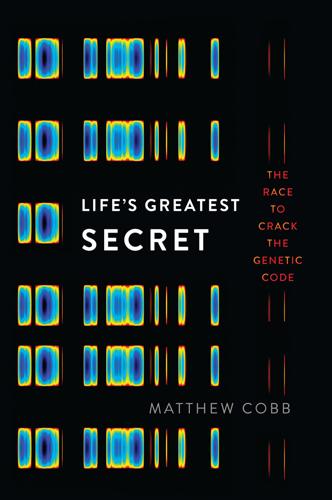
Life's Greatest Secret: The Race to Crack the Genetic Code
by
Matthew Cobb
Published 6 Jul 2015
Although this was primarily for his decades of work on pneumococci, the citation, which was printed in the widely read US journal Science, referred to his isolation of the transforming principle and concluded, ‘this discovery has very far-reaching implications for the general science of biology’.26 In 1945, the Royal Society of London followed suit and awarded Avery the Copley Medal, again primarily for his microbiological work but with a powerful recognition of the importance of the 1944 paper: ‘the interest and importance of this work, to chemists and biologists (and perhaps most of all to geneticists) is outstanding’.27 In November 1945, Hermann Muller gave the prestigious Pilgrim Trust lecture to the Royal Society.
…
Glass (eds), A Symposium on the Chemical Basis of Heredity, Baltimore, The Johns Hopkins Press, 1957, pp. 3–22. Beadle, G. W. and Tatum, E. L., ‘Genetic control of biochemical reactions in Neurospora’, Proceedings of the National Academy of Sciences USA, vol. 27, 1941, pp. 499–506. Bearn, A. G., ‘Oswald T. Avery and the Copley Medal of the Royal Society’, Perspectives in Biology and Medicine, vol. 39, 1996, pp. 550–5. Beckwith, J., ‘The operon as paradigm: Normal science and the beginning of biological complexity’, Journal of Molecular Biology, vol. 409, 2011, pp. 7–13. Behura, S. K. and Severson, D. W., ‘Codon usage bias: causative factors, quantification methods and genome-wide patterns: with emphasis on insect genomes’, Biological Reviews, vol. 88, 2013, pp. 49–61.
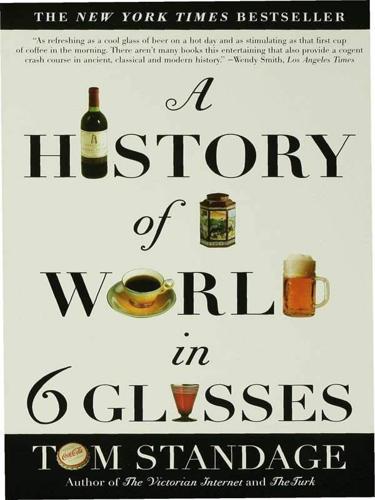
A History of the World in 6 Glasses
by
Tom Standage
Published 1 Jan 2005
By this time he had devised a more efficient way to make his sparkling water, by generating the gas in one bottle from a chemical reaction and passing it into a second bottle, inverted and filled with water. Once enough gas had built up in the second bottle, he shook it to combine the gas with the water. For the medical potential of his work Priestley was awarded the Copley Medal, the Royal Society's highest honor. (Carbonated water was wrongly expected to be particularly useful at sea, for use against scurvy; this was before the effectiveness of lemon juice had become widely understood.) Priestley himself made no attempt to commercialize his findings, and it seems that Thomas Henry, a chemist and apothecary who lived in Manchester, was the first to offer artificially carbonated water for sale as a medicine, sometime in the early 1770s.
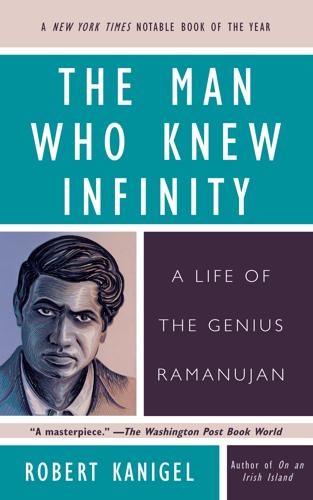
The Man Who Knew Infinity: A Life of the Genius Ramanujan
by
Robert Kanigel
Published 25 Apr 2016
Later that year, the Royal Society notified him that he was to receive its highest honor, the Copley Medal. “Now I know that I must be pretty near the end,” he told Snow. “When people hurry up to give you honorific things there is exactly one conclusion to be drawn.” On November 24, Snow wrote his brother Philip: “Hardy is now dying (how long it will take no one knows, but he hopes it will be soon) and I have to spend most of my spare time at his bedside.” It was soon. Hardy died on December 1, 1947, the day he was to be presented the Copley Medal. He left his substantial savings and the royalties of his books, once having provided for his sister, to the London Mathematical Society.
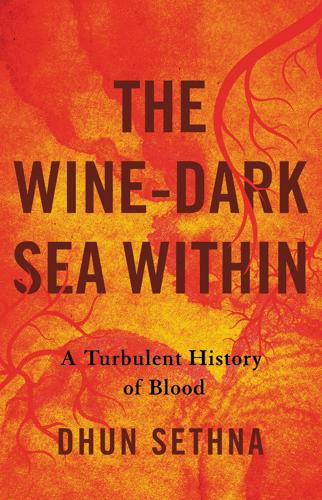
The Wine-Dark Sea Within: A Turbulent History of Blood
by
Dhun Sethna
Published 6 Jun 2022
—Carl Wilhelm Scheele Joseph Priestley, the son of a wool-cloth maker and the discoverer of oxygen, was born of sturdy Puritan stock in the tiny village of Fieldhead at West Riding, in Yorkshire.1 That was about all that he wished the world to know about himself. He would become a towering figure in British science after Harvey, and it would be impossible to ignore him. Honors were showered on two continents, including election to the Royal Society, which awarded him its Copley Medal (the Nobel Prize of that time), and he achieved the standing of a mythical hero after his death. His early years alone hinted that he was destined for extraordinary things when he was ordained for the ministry from the dissenting academy at Daventry, Northamptonshire. After ministering at Needham Market in Suffolk and at Nantwich in Cheshire, he eventually became a tutor at the prestigious Unitarian Warrington Academy in Lancashire.

The Most Powerful Idea in the World: A Story of Steam, Industry, and Invention
by
William Rosen
Published 31 May 2010
That same year, evidently lacking enough occupation to keep himself interested, Smeaton published a paper entitled An Experimental Enquiry Concerning the Natural Powers of Water and Wind to Turn Mills. The Enquiry, which was rewarded with the Royal Society’s oldest and most prestigious prize—the Copley Medal for “outstanding research in any branch of science”—documented Smeaton’s nearly seven years’ worth of research into the efficiency of different types of waterwheels, a subject that despite several millennia of practical experience with the technology was still largely a matter of anecdote or, worse, bad theory.
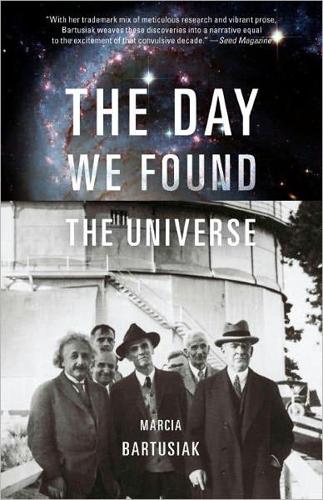
Day We Found the Universe
by
Marcia Bartusiak
Published 6 Apr 2009
Many of the personal details of Leavitt's life are drawn from George Johnson's excellent biography of Henrietta Leavitt, the most comprehensive review of her life to date. 93 “For light amusements, she appeared to care little”: Bailey (1922), p. 197. 94 “For this I should be willing to pay thirty cents an hour”: Johnson (2005), pp. 31–32. 95 “variable-star ‘fiend’”: Ibid., p. 37. 95 one of the first and brightest discovered: The English astronomer John Goodricke first noticed the variable brightness of δ Cephei in 1784. An astronomy prodigy (and also deaf like Leavitt), he won the Royal Society's prestigious Copley medal at the age of nineteen for his work on eclipsing binary stars. He died three years later of pneumonia. 95 “As a rule, they are faint during the greater part of the time”: Leavitt (1908), p. 107. 95 “It is worthy of notice”: Ibid. 97 “A remarkable relation between the brightness of these variables and the length of their periods will be noticed”: Leavitt and Pickering (1912), p. 1. 98 “masterpiece”: Rubin (2005), p. 1817. 98 “to work, not to think”: Payne-Gaposchkin (1984), p. 149. 98 “It is to be hoped, also, that the parallaxes [essentially, distances] of some variables of this type may be measured”: Leavitt and Pickering (1912), p. 3. 98 the cold aggravated her hearing condition: Johnson (2005), p. 31. 98 observatory's prime function was to collect and classify data: Jones and Boyd (1971), p. 369. 98 quickly assigned Leavitt another task: Johnson (2005), pp. 56–57. 98 “a harsh decision, which condemned a brilliant scientist to uncongenial work”: Payne-Gaposchkin (1984), p. 146. 99 “[It's] of enormous importance in the present discussions”: HUA, Shapley to Leavitt, May 22, 1920. 99 “Miss Leavitt had no understudy competent to take up her work”: HUA, Shapley to Frederick Seares, December 13, 1921. 99 nominate her for a Nobel Prize in physics: Johnson (2005), p. 118. 7.

The Lonely Century: How Isolation Imperils Our Future
by
Noreena Hertz
Published 13 May 2020
An evangelical at heart, he initially pursued a career in the Church of Scotland but found public speaking too stressful; he once fainted at a dinner party when invited to say grace.1 Instead, he turned to a different kind of evangelism: evangelism for science. In 1817, Brewster – by now a fellow of the Royal Society and winner of its prestigious Copley Medal for his contribution to the field of optics – patented a ‘philosophical toy’ that used angled mirrors and small pieces of coloured glass to create beautiful symmetrical forms. This device, he hoped, would allow people to amuse themselves while simultaneously observing the wonders of science. Brewster’s invention, the kaleidoscope – from the Greek kalos (beautiful) and eidos (form) – took off beyond his wildest dreams.
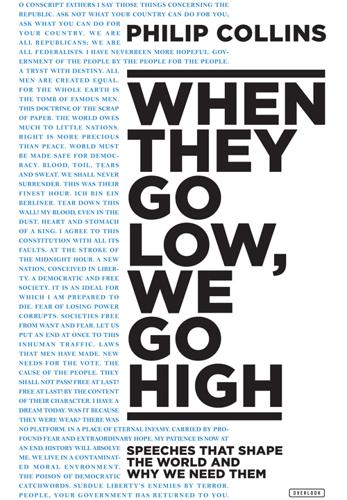
When They Go Low, We Go High: Speeches That Shape the World – and Why We Need Them
by
Philip Collins
Published 4 Oct 2017
He became renowned as the greatest scientist of the mid-eighteenth century. He was a fellow of the Royal Society in London and a foreign member of the French Royal Academy of Science. Franklin’s proof that lightning was electrical opened a new frontier of knowledge. For his studies in electricity he won the 1753 Copley Medal of the Royal Society of London, the nearest contemporary equivalent of which would be the Nobel Prize for Physics. Crossing the two cultures seemingly without strain, Franklin was also regarded by David Hume as the first great American man of letters and the outstanding literary propagandist of his time.
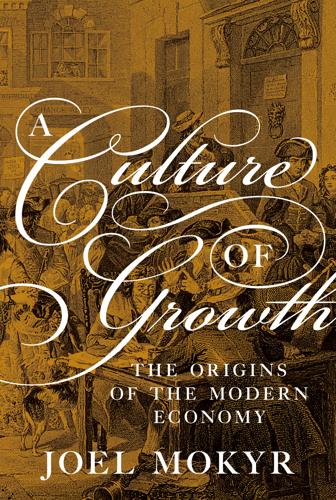
A Culture of Growth: The Origins of the Modern Economy
by
Joel Mokyr
Published 8 Jan 2016
Robins was a self-taught mathematician, who renounced his Quaker background to apply best-practice mathematics and physics to engineering and then to ballistics. In the words of his biographer, “his New Principles of Gunnery [1742] transformed ballistics into a Newtonian science” (Steele, 2012). His work was quite influential, winning him the Copley Medal, and translated into many languages (into German by none other than Leonhard Euler who was working on similar problems). His ideas were widely implemented and led to military reforms in the Austrian and French artillery.6 An example of a vexing practical problem that the advances in both propositional and prescriptive knowledge between 1500 and 1700 helped solve was the measurement of longitude at sea.
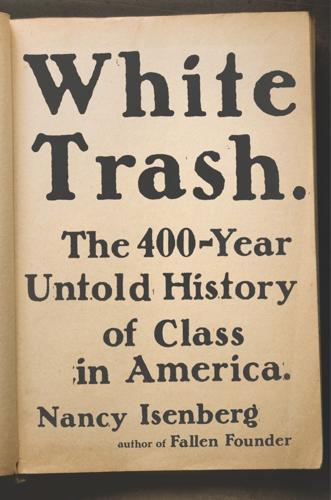
White Trash: The 400-Year Untold History of Class in America
by
Nancy Isenberg
Published 20 Jun 2016
So successful was Franklin in expanding his printing business, taking on partners, and honing his literary disguises that he retired from day-to-day management of all commercial concerns in 1748.2 Freed from work, he was elected to the Pennsylvania Assembly in 1751, and remained active in promoting civic enterprise. He helped to found a hospital and a young men’s academy in Philadelphia. During the same decade, his electrical experiments made a strong impression in Europe. He was awarded the prestigious Copley Medal of the Royal Society of London. Honorary degrees from Harvard, Yale, and the College of William and Mary quickly followed. Appointed deputy postmaster general, he introduced reforms for improving communication among the colonies. At the Albany Congress in 1754, he proposed an intercolonial governing body aimed at shoring up military defenses and promoting western expansion.
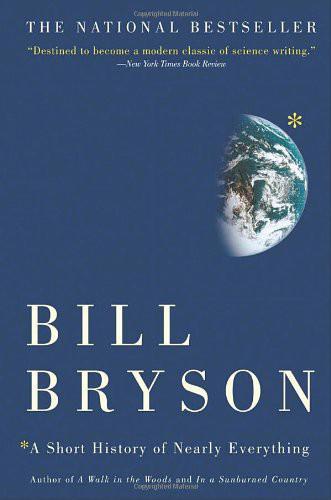
A Short History of Nearly Everything
by
Bill Bryson
Published 5 May 2003
Having married his own cousin, Darwin glumly suspected that certain physical and mental frailties among his children arose from a lack of diversity in his family tree. Darwin was often honored in his lifetime, but never for On the Origin of Species or Descent of Man. When the Royal Society bestowed on him the prestigious Copley Medal it was for his geology, zoology, and botany, not evolutionary theories, and the Linnaean Society was similarly pleased to honor Darwin without embracing his radical notions. He was never knighted, though he was buried in Westminster Abbey—next to Newton. He died at Down in April 1882. Mendel died two years later.
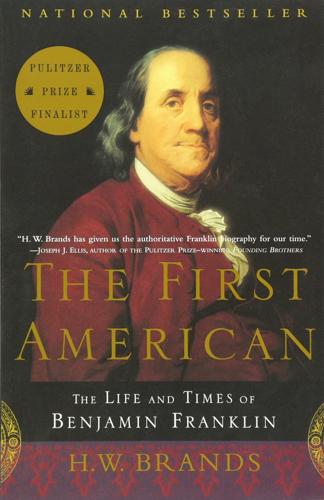
The First American: The Life and Times of Benjamin Franklin
by
H. W. Brands
Published 1 Jan 2000
This when brought to the lips gives a shock, if the party be close shaved and does not breathe on the liquor.”] Collinson duly delivered this letter to the Royal Society, where it was read aloud at the end of 1749 and assigned for critique to William Watson, a distinguished member and a recent winner of the society’s Copley Medal for his electrical work. Joseph Priestley, who would become a renowned scientist in his own right, and a historian of electricity, characterized Watson as “the most interested and active person in the kingdom in every thing relating to electricity.” When Watson reported back to the society, he described Franklin’s work as “new and very curious” and conceded that he felt himself “not quite master of part of this gentleman’s reasoning.”